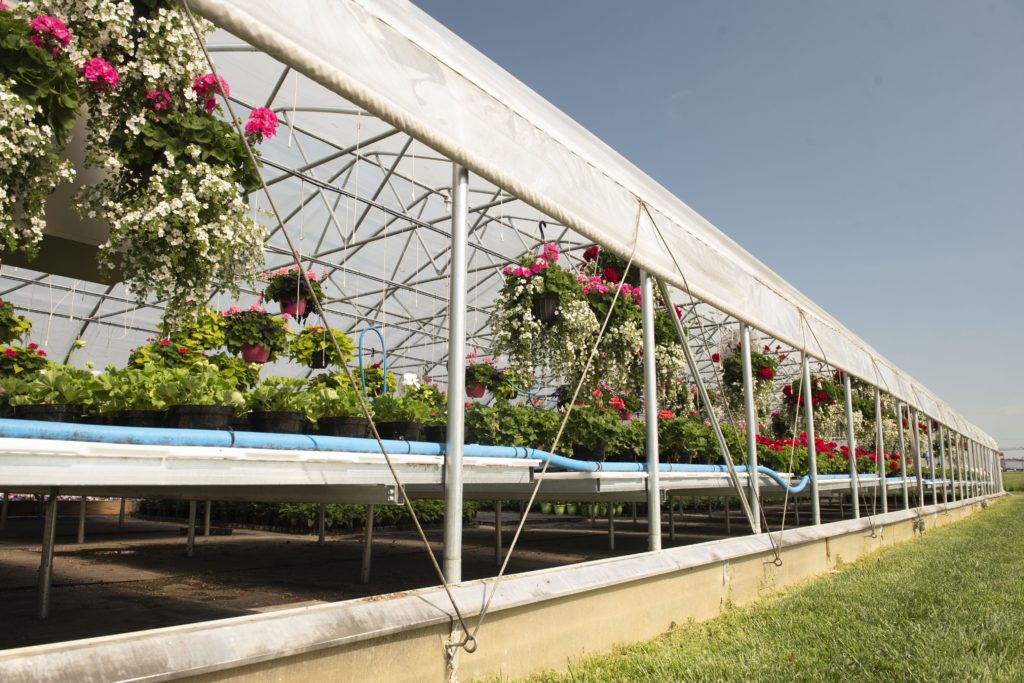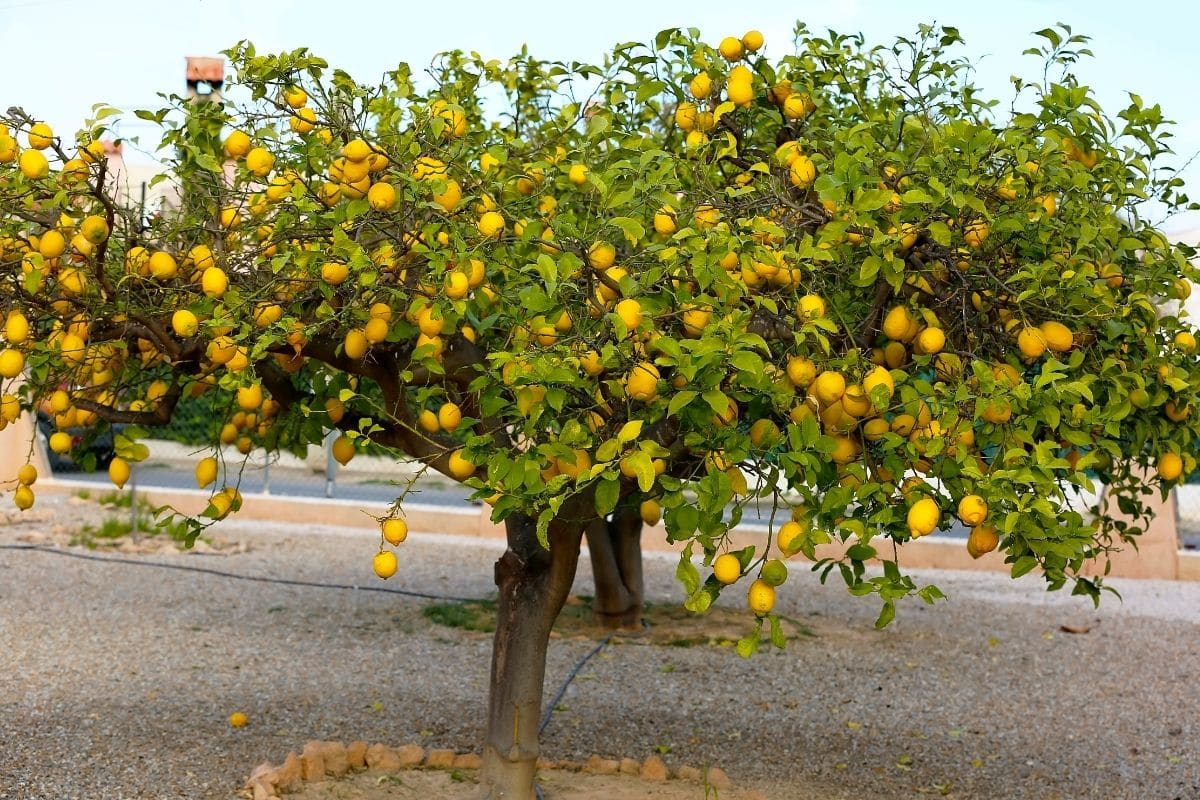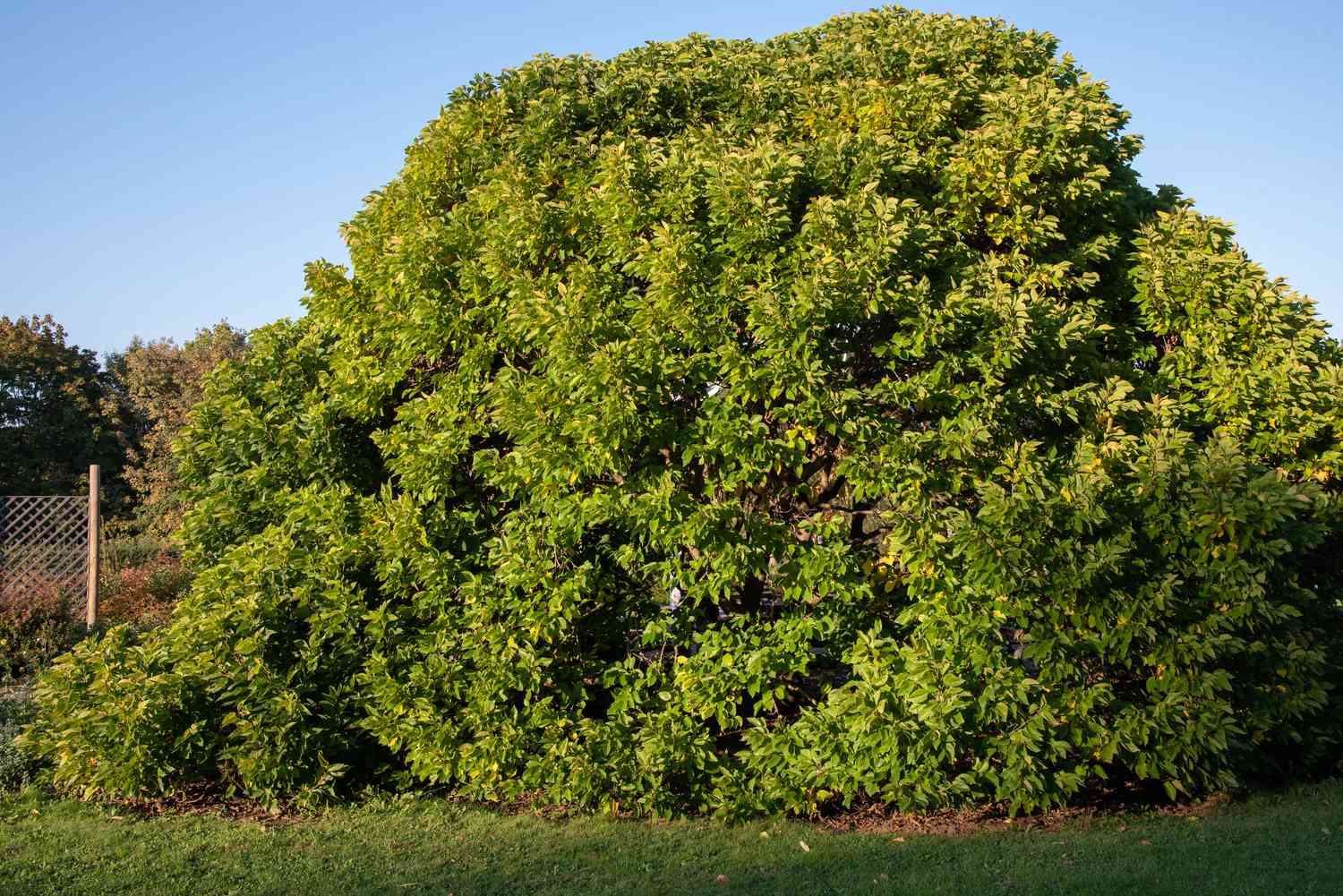Home>Gardening Techniques>DIY Projects>How Big Should A Greenhouse Be


DIY Projects
How Big Should A Greenhouse Be
Modified: January 22, 2024
Discover the ideal size for your DIY greenhouse project. Find out how big your greenhouse should be to create the perfect growing environment for your plants.
(Many of the links in this article redirect to a specific reviewed product. Your purchase of these products through affiliate links helps to generate commission for Chicagolandgardening.com, at no extra cost. Learn more)
Table of Contents
Introduction
When it comes to building a greenhouse, one of the most important questions you need to answer is how big should it be. The size of your greenhouse will directly impact its functionality, productivity, and the variety of plants you can grow. Deciding on the right size requires careful consideration of several factors to ensure optimal results.
In this article, we will explore the key factors to consider when determining the size of your greenhouse. From your planting goals and available space to budget considerations and the types of crops you intend to grow, each factor plays a crucial role in determining the ideal greenhouse size. By understanding these factors and considering them in combination, you will be able to make an informed decision that aligns with your gardening needs.
Whether you are a gardening enthusiast looking to grow your own vegetables or a professional horticulturist aiming for large-scale production, finding the right greenhouse size is essential. By carefully evaluating your specific requirements, you can maximize the efficiency and success of your greenhouse project.
So, let’s dive into the factors that need to be considered when determining the size of your greenhouse.
Factors to Consider when Determining Greenhouse Size
When deciding on the size of your greenhouse, several factors need to be taken into consideration. These factors will help you determine the optimal size that aligns with your goals, available space, and budget. Let’s explore these factors in detail:
- Planting Goals and Desired Production: Consider the purpose of your greenhouse. Are you growing plants for personal use or aiming for commercial production? Determine the quantity and variety of plants you wish to grow, as this will impact the required square footage of your greenhouse.
- Available Space: Assess the space you have available for your greenhouse. Measure the area and take into account any limitations or restrictions, such as property boundaries or existing structures. It’s important to leave enough room for walkways, workspaces, and potential future expansions.
- Budget and Cost Considerations: Set a budget for your greenhouse project and determine how much you can afford to invest in the structure. Remember to include costs for materials, equipment, and any necessary permits. A larger greenhouse will generally require a higher initial investment, so be sure to factor in ongoing maintenance and operational costs as well.
- Types of Crops: Consider the specific plants and crops you plan to cultivate. Different plants have varying space requirements, both horizontally and vertically. Take into account the growth habits, spacing needs, and potential height of your chosen crops when determining the size of your greenhouse.
- Environmental Control Systems: Evaluate the environmental control systems you plan to implement in your greenhouse, such as heating, ventilation, and irrigation systems. These systems may require additional space and can influence the overall size of your greenhouse.
- Expansion Plans: Consider whether you anticipate expanding your greenhouse in the future. If you have plans for future growth, it may be beneficial to build a slightly larger greenhouse than your current needs require. This will save you the expense and effort of building a new greenhouse down the line.
- Flexibility and Versatility: Think about the flexibility and versatility you want from your greenhouse. Do you envision growing a wide range of crops throughout the year, or do you have specific plants in mind? A larger greenhouse allows for greater flexibility in crop rotation, experimentation, and accommodating various growing techniques.
- Other Considerations: Finally, think about any other factors that may influence the size of your greenhouse. This could include local climate conditions, regional building codes and regulations, and the availability of skilled labor for construction and maintenance.
By carefully considering these factors, you can make an informed decision about the size of your greenhouse that will meet your needs and optimize your growing conditions.
Planting Goals and Desired Production
One of the first factors to consider when determining the size of your greenhouse is your planting goals and desired production. Understanding what you hope to achieve with your greenhouse will help guide you in determining the appropriate size. Here are some key considerations:
Quantity of Plants: Determine how many plants you intend to grow in your greenhouse. Are you looking to cultivate a small selection of plants for personal use, or do you have aspirations of producing a large quantity of crops for commercial purposes? The number of plants you plan to grow directly affects the square footage required.
Variety of Plants: Consider the types of plants you wish to grow. Different plants have varying space requirements and growth habits. For example, leafy greens and herbs can be grown in a smaller footprint, while fruiting plants like tomatoes or cucumbers may require more space due to their size and support needs. Take into account the specific space requirements of each plant when determining the size of your greenhouse.
Year-Round Production: Are you planning to grow crops year-round or just during specific seasons? If you desire year-round production, you will need to factor in the space needed for continuous planting and harvesting. This may require a larger greenhouse to accommodate the rotation of crops and ensure a steady supply throughout the year.
Specialized Growing Techniques: If you are interested in implementing specialized growing techniques such as hydroponics or vertical farming, you will need to allocate additional space for the necessary equipment and infrastructure. These techniques often require specific layouts and configurations, which can impact the size of the greenhouse.
Future Growth: Consider your long-term goals and whether you anticipate expanding your greenhouse in the future. If you have aspirations of increasing your production capacity, it may be wise to build a slightly larger greenhouse from the start. This will save you the hassle and expense of building a new structure in the future.
Efficiency and Productivity: Evaluate the level of efficiency and productivity you aim to achieve in your greenhouse. A larger greenhouse allows for better organization and utilization of space, which can lead to increased productivity. It also provides more room for specialized zones such as propagation areas, storage, or workspace.
By carefully considering your planting goals and desired production, you can determine the appropriate size for your greenhouse. Whether you have aspirations of personal home gardening or commercial-scale production, understanding your specific needs will ensure your greenhouse is sized to maximize your goals and yield successful results.
Available Space
Another crucial factor to consider when determining the size of your greenhouse is the amount of available space you have. The available space will directly impact the size and layout of your greenhouse. Here are some key considerations when assessing the available space:
Measurement and Dimensions: Begin by measuring the area where you plan to build your greenhouse. Consider the length, width, and height of the space. This will provide a baseline for determining the maximum size of your greenhouse. Take into account any existing structures, property boundaries, or other limitations that may impact the footprint or height of your greenhouse.
Orientation and Sun Exposure: Evaluate the orientation of the available space and assess its sun exposure. A greenhouse ideally needs to receive sufficient sunlight throughout the day to promote plant growth. Consider the orientation of the space in relation to the path of the sun and any obstructions that may block sunlight, such as nearby buildings or trees.
Walkways and Workspaces: It’s important to allocate space for walkways and workspaces within your greenhouse. These areas allow for easy movement, maintenance, and harvesting. Plan for wide enough walkways to comfortably navigate the greenhouse, as well as designated workspaces for potting, pruning, and other tasks.
Future Expansions: Consider whether you anticipate the need for future expansions or additions to your greenhouse. If you have plans to increase your growing capacity or introduce new crops, accounting for potential expansions in your available space will save you time and resources down the line. Leave enough room for potential future greenhouse expansions while maintaining the functionality of the current space.
Other Structures and Functions: Assess any other structures or functions you may require within the greenhouse. This could include storage areas, irrigation systems, or environmental control systems like fans or heaters. Allocate space for these additional elements within your available space to ensure a well-organized and functional greenhouse.
Local Regulations and Building Codes: Familiarize yourself with any local regulations or building codes that may impact the size and location of your greenhouse. Some areas have restrictions on the maximum square footage or setbacks required. Ensure that your greenhouse plans comply with any applicable regulations to avoid any legal issues or setbacks.
By carefully considering the available space, you can determine the appropriate size for your greenhouse that maximizes the functionality and efficiency of the space. Remember to factor in future expansions and any necessary structures or workspaces, while also adhering to local regulations and codes.
Budget and Cost Considerations
When determining the size of your greenhouse, it is important to consider your budget and cost considerations. The size of your greenhouse will impact the overall cost of your project, including construction materials, equipment, and ongoing maintenance. Here are some key factors to consider:
Initial Investment: Assess your budget and determine how much you can allocate to your greenhouse project. Keep in mind that a larger greenhouse will generally require a higher initial investment. Consider the cost of construction materials, such as framing, glazing materials, and insulation. Additionally, factor in the cost of any necessary equipment, such as heating or cooling systems, benches, or irrigation systems.
Operational Costs: Consider the ongoing operational costs of your greenhouse. These costs may include heating, cooling, and ventilation systems, as well as water and electricity usage. A larger greenhouse will typically require more energy to maintain optimal growing conditions. Evaluate the long-term cost implications and ensure that you can sustain the operational costs within your budget.
Maintenance and Repair: Take into account the maintenance and repair costs associated with your greenhouse. Larger greenhouses can require more extensive maintenance, including cleaning, replacing worn-out components, and repairing any structural issues. Assess whether you have the resources and budget to properly maintain and repair your greenhouse over time.
Permits and Regulations: Investigate any permits or regulations that may impact the cost of your greenhouse project. Some areas require permits for greenhouse construction, which may come with associated fees. Research any applicable regulations and ensure that you comply with all local building codes, as non-compliance can result in potential fines or delays.
Return on Investment: Consider the potential return on investment (ROI) of your greenhouse project. If you are engaging in commercial growing, determine the expected revenue from your crops and weigh it against your initial investment and operational costs. Evaluate the profit potential and determine whether the size of your greenhouse aligns with your expected ROI.
Scalability: Explore the scalability of your greenhouse project in relation to your budget. If your budget is limited, consider starting with a smaller greenhouse that can be expanded over time as your resources allow. This approach will allow you to gradually grow your greenhouse operation while managing costs and maximizing efficiency.
By carefully considering your budget and overall cost considerations, you can determine the appropriate size of your greenhouse that aligns with your financial resources. It is crucial to strike a balance between your desired greenhouse size and the financial feasibility of the project to ensure long-term success.
Types of Crops
When determining the size of your greenhouse, it is important to consider the types of crops you plan to cultivate. Different plants have varying space requirements, growth habits, and support systems. Here are some key factors to consider in relation to the types of crops you intend to grow:
Plant Spacing: Each crop has specific spacing requirements to ensure healthy growth and proper airflow. Leafy greens, for example, can be grown in a tighter spacing, while vining crops like tomatoes or cucumbers will require more room for their sprawling growth habit. Take into account the recommended spacing for each crop and calculate the necessary square footage accordingly.
Growth Height: Consider the potential height of your crops. Fruit-bearing plants like tomatoes may require trellises or stakes for support, which will require additional space within the greenhouse. Take into account both the width and height of the plants when determining the size of your greenhouse.
Growing Systems: Evaluate the growing systems you plan to implement. Some crops, like strawberries, can be grown using vertical systems, maximizing the use of vertical space and reducing the required footprint. Others, like hydroponic systems, may require additional space for tanks, pipes, and grow beds. Consider the specific requirements of the growing systems you plan to use when determining the size of your greenhouse.
Crop Rotation and Succession Planting: If you plan to practice crop rotation or succession planting in your greenhouse, factor in the space needed for multiple crops at various stages of growth. This allows for a continuous and efficient production cycle. Consider the timeframes of each crop’s growth and ensure you have enough space to accommodate the rotation and succession planting schedule.
Specialized Growing Techniques: Different crops may require specialized growing techniques, such as hydroponics, aquaponics, or vertical farming. These techniques often have specific space and infrastructure requirements. Evaluate the unique needs of your chosen growing techniques and allocate sufficient space within your greenhouse for their implementation.
Diversity of Crops: Consider whether you plan to grow a diverse range of crops or focus on specific types. A larger greenhouse will allow for more versatility and diversity in the crops you can cultivate. This can be advantageous for home gardeners looking to grow a variety of fruits and vegetables, as well as commercial growers aiming to offer a wide range of produce to their customers.
By carefully considering the types of crops you plan to grow, you can determine the appropriate size of your greenhouse. Taking into account the spacing requirements, growth habits, support systems, and growing techniques of your chosen crops will ensure that your greenhouse provides the ideal environment for their successful growth and maximize your overall yields.
Environmental Control Systems
Environmental control systems play a crucial role in maintaining optimal growing conditions within a greenhouse. When determining the size of your greenhouse, it is important to consider the space required for these systems. Here are some key factors to consider regarding environmental control systems:
Heating and Cooling Systems: Assess the heating and cooling systems you plan to implement in your greenhouse. These systems may require additional space for equipment such as heaters, thermostats, fans, or evaporative coolers. Consider the energy requirements and ventilation needs of your chosen heating and cooling systems, as well as the space they will occupy.
Ventilation and Air Circulation: Adequate ventilation is essential for maintaining proper air circulation, preventing overheating, controlling humidity levels, and promoting healthy plant growth. Ventilation systems may include exhaust fans, louvers, or automatic vents. Ensure that you have enough space in your greenhouse for proper ventilation and air circulation systems.
Irrigation and Water Systems: Evaluate the irrigation and water systems you plan to use. This includes ensuring adequate space for water tanks, pipes, and irrigation lines. Consider the specific water needs of your crops and design a system that efficiently delivers water to all plants within the greenhouse.
Lighting Systems: If you plan to supplement natural sunlight with artificial lighting, allocate space for the lighting fixtures and any necessary electrical connections. Depending on the lighting technology used, this may include overhead lights, LED panels, or grow lights mounted on shelving units. Ensure that your greenhouse design accounts for the space required for the lighting system.
Environmental Monitoring: Consider the space needed for environmental monitoring systems such as thermostats, humidity sensors, or CO2 monitors. These systems help you track and regulate the conditions within your greenhouse. Allocate space for these monitoring devices and ensure they are strategically placed for accurate readings.
Control Panels and Automation: If you plan to automate your greenhouse operation, consider the space required for control panels, timers, and other automation equipment. Automation systems can help manage various climate control functions, including temperature, humidity, and irrigation. Allocate space for these control systems to ensure ease of operation and maintenance.
Space for Maintenance and Repairs: Environmental control systems require regular maintenance and occasional repairs. Allocate space in your greenhouse for technician access and equipment storage. This will facilitate smooth maintenance operations and prevent any disruptions to your greenhouse production.
By considering the space requirements for environmental control systems, you can design your greenhouse with optimal climate control. Ensuring there is ample space for these systems will help maintain healthy growing conditions for your plants and contribute to the overall success of your greenhouse operation.
Expansion Plans
When determining the size of your greenhouse, it is essential to consider your expansion plans. Anticipating future growth and expansion is crucial to avoid the need for costly modifications or rebuilding in the future. Here are some key factors to consider regarding expansion plans:
Future Goals and Vision: Begin by evaluating your long-term goals and vision for your greenhouse. Do you plan to expand your operations in the future? Consider whether you want to increase your production capacity, diversify your crop selection, or introduce new growing techniques. Understanding your future goals will influence the size of your greenhouse.
Designing for Potential Expansion: Incorporate flexibility into your greenhouse design to accommodate potential future expansion. Leave space for additional structures, such as additional bays or extensions, to be added later if needed. Consider designing the layout of your greenhouse in a modular manner to easily integrate any future expansions.
Room for Additional Equipment: Assess whether you anticipate the need for additional equipment or infrastructure in the future. This could include installing new environmental control systems, irrigation systems, or automation technology. Factoring in the space required for these future additions will prevent overcrowding and ensure a smooth transition when expanding.
Infrastructure Planning: Consider the infrastructure needed for expansion, such as utilities, water supply, and electrical systems. Ensure that there is sufficient capacity to accommodate future growth. Consulting with professionals, such as electricians or plumbers, can help determine if any upgrades or modifications are necessary to support your expansion plans.
Budget Considerations: Evaluate your budget and determine how much you can allocate to future expansions. While it may be tempting to build a larger greenhouse from the start to accommodate future growth, it is crucial to ensure that the cost aligns with your budget. Striking a balance between your current needs and future expansion plans is essential.
Timing and Market Demand: Consider the timing of your expansion plans and the anticipated market demand. Align your expansion strategy with market trends and consumer demand for your products. This will help ensure that your greenhouse expansion is timed appropriately and meets the needs of your target market.
By considering your expansion plans, you can design a greenhouse that allows for future growth and development. Planning ahead and incorporating flexibility into your greenhouse design will save you time, money, and effort when expanding your operations in the future.
Flexibility and Versatility
Flexibility and versatility are important factors to consider when determining the size of your greenhouse. A flexible and versatile greenhouse design allows you to adapt to changing needs, crop rotation, and experimentation. Here are some key considerations regarding flexibility and versatility:
Crop Rotation: Consider whether you plan to practice crop rotation in your greenhouse. Crop rotation promotes soil health, minimizes pest and disease problems, and maximizes the use of resources. A larger greenhouse provides the space needed for rotating crops and allows for more efficient use of the growing area.
Experimentation and Variety: If you enjoy experimenting with different crops or varieties, a larger greenhouse offers more space to explore. You can try out new plants, test different growing techniques, and expand your horticultural knowledge. Having the flexibility to explore new plants and techniques can lead to exciting discoveries and opportunities.
Microclimates and Specialized Areas: A larger greenhouse allows you to create different microclimates and specialized areas within the structure. You can dedicate separate zones for plants with specific temperature, humidity, or light requirements. This flexibility enables you to grow a diverse range of plants simultaneously and cater to their individual needs.
Seasonal Adjustments: Having a larger greenhouse provides the flexibility to make seasonal adjustments. For example, you can allocate more space for warm-season crops during the summer months and transition to cool-season crops during the winter. This adaptability allows you to optimize the use of your greenhouse throughout the year.
Additional Growing Techniques: A larger greenhouse offers the opportunity to implement various growing techniques. You can incorporate vertical gardening, hydroponics, aquaponics, or other innovative practices. These techniques take advantage of vertical space or soilless growing methods, allowing for increased productivity and diversity of crops.
Expansion Possibilities: Having a larger greenhouse leaves room for future expansion, accommodating your evolving needs and aspirations. You can gradually increase the size of your operation as demand grows or as you become more experienced in greenhouse gardening. This scalability allows you to adapt to changing circumstances and seize new opportunities.
Integrating Non-Plant Elements: Consider whether you want to incorporate non-plant elements into your greenhouse. A larger greenhouse provides the flexibility to add seating areas, storage spaces, or educational displays. These additions can enhance the functionality of your greenhouse and create a more inviting and educational environment for visitors.
By prioritizing flexibility and versatility in your greenhouse design, you create a space that can adapt to your changing needs. This adaptability allows you to optimize crop production, explore new techniques, and create a dynamic and evolving greenhouse ecosystem.
Other Considerations
In addition to the factors discussed above, there are several other considerations to keep in mind when determining the size of your greenhouse. These factors can impact the functionality, efficiency, and success of your greenhouse project. Here are some important points to consider:
Local Climate Conditions: Evaluate the local climate conditions in your area. Consider factors such as temperature, humidity, wind, and sunlight. Reflecting on these conditions will help you determine the appropriate size of your greenhouse and incorporate necessary measures for climate control.
Regional Building Codes and Regulations: Familiarize yourself with any regional building codes and regulations that may affect your greenhouse project. Obtain the necessary permits and ensure compliance with local regulations. These codes may impose restrictions on the maximum size or height of your greenhouse.
Accessibility and Safety: Ensure that your greenhouse is easily accessible for maintenance and harvesting. Consider the design of pathways, entrances, and exits. Incorporate safety measures such as non-slip flooring or handrails to minimize accidents and promote a safe working environment.
Skilled Labor and Expertise: Assess the availability of skilled labor and expertise in your area. If you require professional assistance for construction, installation, or maintenance, ensure that there are experienced individuals or companies available. Having access to knowledgeable labor can help streamline your greenhouse project and ensure its success.
Budget for Unforeseen Expenses: Allocate a portion of your budget for unforeseen expenses. Construction projects often have unexpected costs, such as repairs, equipment replacements, or design modifications. Having a contingency fund will provide a buffer and help prevent financial strain during the greenhouse construction process.
Maintenance and Upkeep: Consider your ability to regularly maintain and upkeep your greenhouse. Maintenance tasks include cleaning, pest control, equipment maintenance, and monitoring environmental conditions. Allocating the appropriate size for walkways, storage space, and work areas will facilitate maintenance activities and ensure the longevity of your greenhouse.
Estimating Future Demand: Projecting future demand for your crops is crucial when determining the size of your greenhouse. Assess market trends, consumer preferences, and potential growth in your target market. This estimation will help you align the size of your greenhouse with anticipated demand and optimize your production capacity.
Aesthetic Appeal: Consider the aesthetic appeal of your greenhouse. While functionality is important, a visually pleasing design can enhance the overall experience and attract customers or visitors. Incorporate design elements that align with your personal taste or branding, making your greenhouse a beautiful and inviting space.
By taking these other considerations into account, you can ensure that your greenhouse project is well-planned, in compliance with regulations, and meets your specific needs and preferences. Careful consideration of these factors will contribute to the success of your greenhouse venture.
Conclusion
When determining the size of your greenhouse, it is crucial to consider a variety of factors to ensure optimal functionality, productivity, and growth conditions. By carefully evaluating your planting goals and desired production, available space, budget and cost considerations, types of crops, environmental control systems, expansion plans, flexibility and versatility, and other relevant considerations, you can make an informed decision about the size of your greenhouse that aligns with your specific needs and goals.
The size of your greenhouse directly impacts its capacity to accommodate the desired number and variety of plants, as well as the efficiency of environmental control systems and any future expansion plans. Taking into account available space, budget constraints, and types of crops will help optimize the use of your greenhouse and maximize productivity. Additionally, considering factors such as environmental control systems, expansion plans, flexibility and versatility, and other relevant considerations provide further customization and adaptability to meet your changing needs and circumstances.
Ultimately, the success of your greenhouse project hinges on finding the right balance between your goals, resources, and the specific requirements of your plants. By carefully considering these factors, you can design and build a greenhouse that provides an optimal growing environment, supports your intended production, and allows for future growth and experimentation.
In conclusion, ensuring that your greenhouse is adequately sized involves careful planning, consideration of various factors, and aligning your decisions with your goals and resources. By finding the perfect size for your greenhouse, you can create an environment that nurtures and supports the growth of your plants, facilitates efficient operations, and brings you joy and success as a greenhouse gardener or commercial grower.









